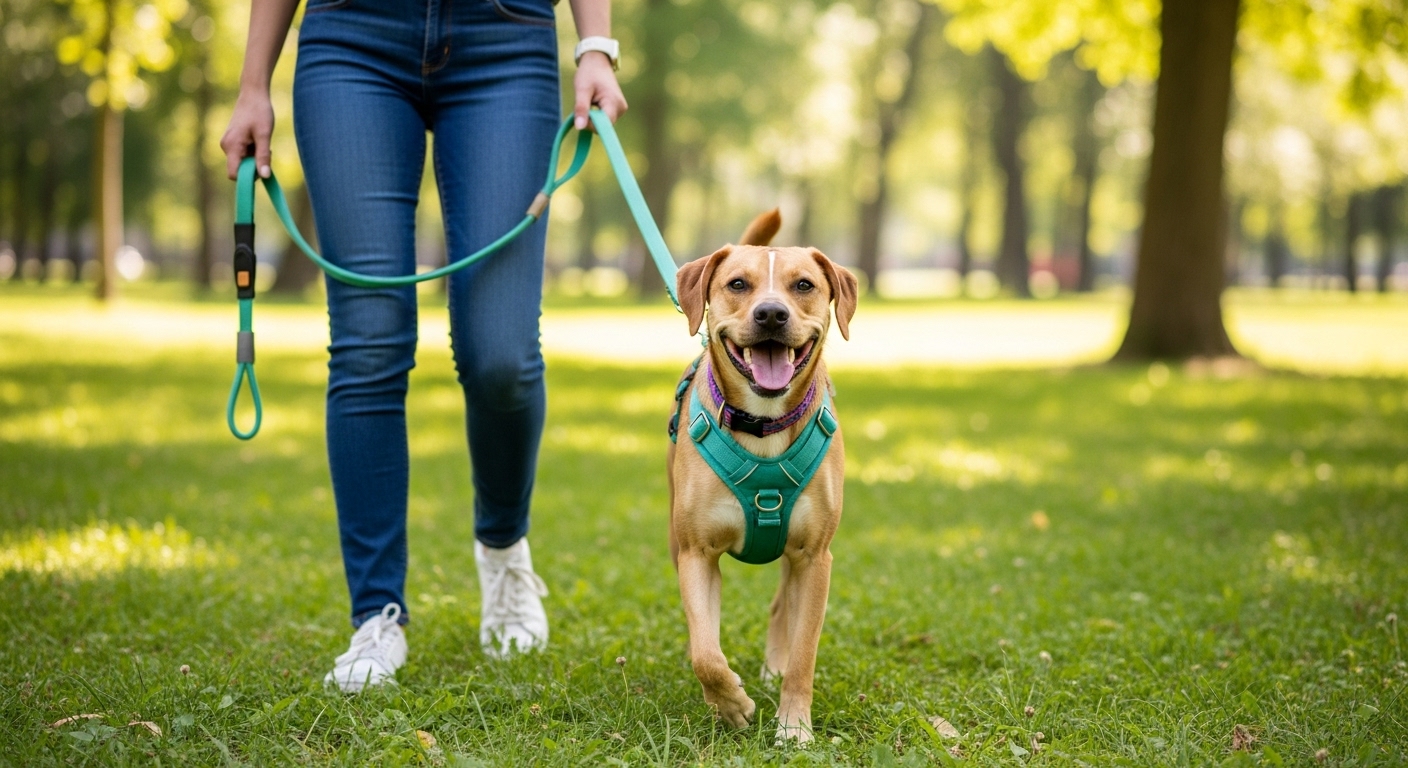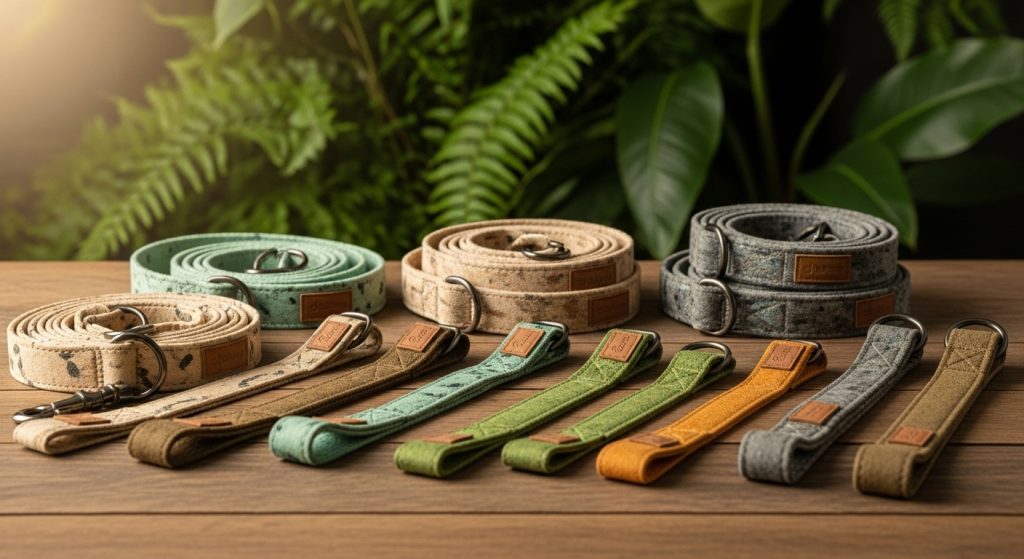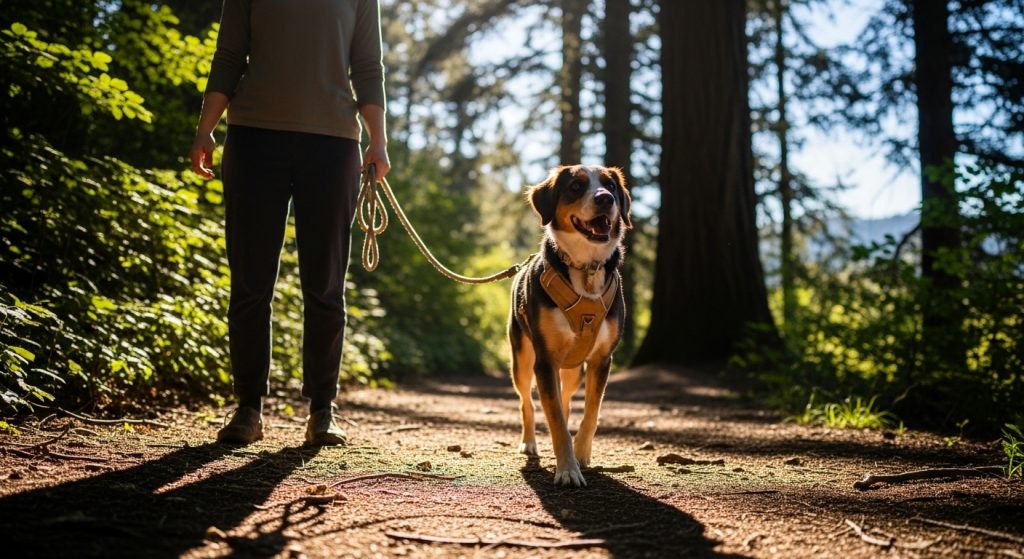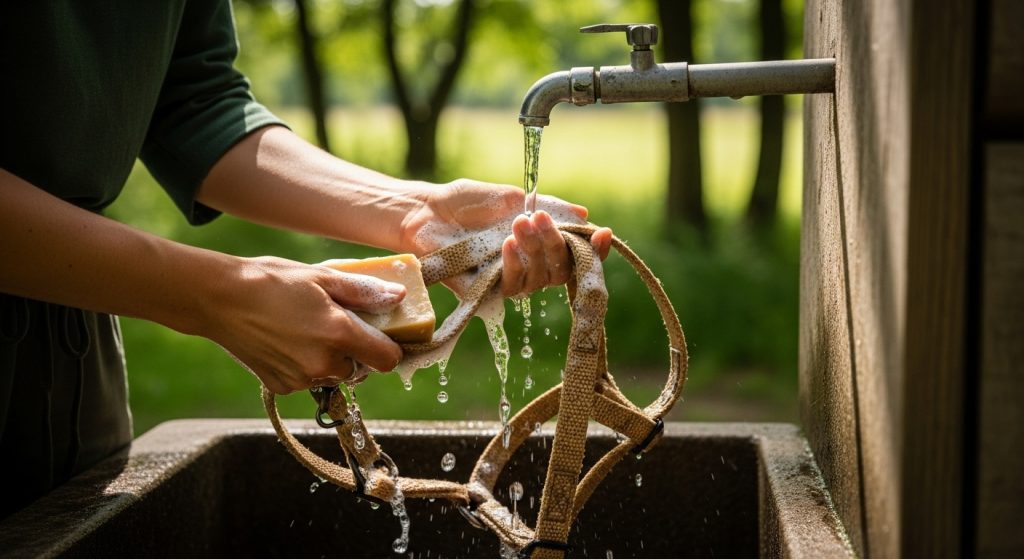Walking your dog is one of life’s simplest joys — but have you ever considered the environmental impact of the gear you use? From nylon leashes to plastic buckles, many traditional pet accessories are made with materials that harm our planet. Choosing sustainable dog leashes and harnesses is not just a trend — it’s a conscious step toward eco-friendly pet ownership.
In this guide, you’ll learn what makes dog gear sustainable, what materials and brands to look for, and how to maintain them for long-lasting use. Let’s dive in!
Understanding Sustainability in Dog Accessories
When we talk about sustainability in dog leashes and harnesses, we mean products that are made responsibly — minimizing waste, pollution, and harm to animals or people during production. Sustainability covers three main areas: materials, manufacturing, and longevity.
1. Eco-Friendly Materials
Look for leashes and harnesses made from recycled or plant-based materials. Common examples include:
-
Hemp: Naturally strong, biodegradable, and antimicrobial.
-
Recycled nylon or polyester: Reduces landfill waste and carbon footprint.
-
Cork leather: Cruelty-free, soft, and renewable.
-
Organic cotton: Grown without harmful pesticides or chemicals.
Each of these materials offers durability while keeping the environment in mind.
2. Ethical Production
Sustainable doesn’t stop at materials — it’s also about fair labor and ethical manufacturing. Brands that are transparent about where and how their products are made are more likely to have responsible production standards.
3. Durability Equals Sustainability
A leash that lasts five years is far more sustainable than one replaced every six months. Choosing well-made products means less waste, fewer replacements, and ultimately less impact on the planet.
In short, the best sustainable dog leashes and harnesses balance durability, comfort, and eco-conscious materials.
How to Select the Right Sustainable Leash and Harness for Your Dog
Now that you understand what makes an accessory sustainable, let’s focus on finding the right fit and function for your pup.
1. Match Your Dog’s Size and Activity Level
Not every leash or harness fits every dog. A lightweight hemp leash may be perfect for a small terrier, while an active Labrador might need a thicker, reinforced version. Check for:
-
Width and thickness: Narrower for small dogs, wider for large breeds.
-
Clip strength: Metal hardware is stronger and more recyclable than plastic.
-
Padding and comfort: Natural cotton or cork padding prevents chafing.
2. Consider Your Walking Style
Do you prefer hands-free jogging leashes, or traditional ones for controlled walks? Sustainable options now include:
-
Adjustable hemp running leashes
-
Organic cotton rope leashes with brass clips
-
Recycled ocean-plastic harnesses for water-loving dogs
3. Certifications to Look For
Eco-conscious brands often carry certifications like:
-
GOTS (Global Organic Textile Standard)
-
OEKO-TEX® Standard 100
-
B Corp Certification
These labels guarantee ethical production and minimal environmental impact.
By selecting gear that suits your dog’s lifestyle and your environmental values, you ensure both comfort and conscience are in harmony.
Caring for and Extending the Life of Your Sustainable Gear
The most sustainable gear is the one that lasts. Proper care not only saves money but also keeps items out of landfills longer.
1. Cleaning Naturally
Avoid chemical detergents that damage natural fibers. Instead:
-
Hand wash with mild soap or baking soda.
-
Air dry instead of tumble drying.
-
Spot-clean cork or hemp to preserve texture.
2. Repair Instead of Replace
If a leash frays or a buckle loosens, try repairing it first. Many sustainable brands offer repair programs or replacement parts, helping you extend the life of your purchase.
3. Recycle or Repurpose
When your gear finally reaches the end of its life, check if the brand has a recycling program. Alternatively, repurpose the materials — an old leash can become a keychain, or padding for a DIY project.
4. Support Brands That Close the Loop
Brands like Project Blu, Cycle Dog, and Earthdog lead the way with closed-loop production — turning waste into new, high-quality products. Supporting such initiatives helps the entire pet industry move toward a greener future.
Sustainability is not just about what you buy, but also how you use and care for it.
Choosing sustainable dog leashes and harnesses is a small step with a big impact. You’re not only providing comfort and safety for your furry friend but also contributing to a healthier planet.
Next time you shop for pet accessories, think beyond the label — consider the story behind the product. From materials to manufacturing and care, every choice you make brings us closer to a cleaner, greener world.




